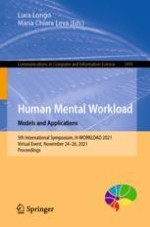2021 | Buch
Human Mental Workload: Models and Applications
5th International Symposium, H-WORKLOAD 2021, Virtual Event, November 24–26, 2021, Proceedings
herausgegeben von: Luca Longo, Maria Chiara Leva
Verlag: Springer International Publishing
Buchreihe : Communications in Computer and Information Science
